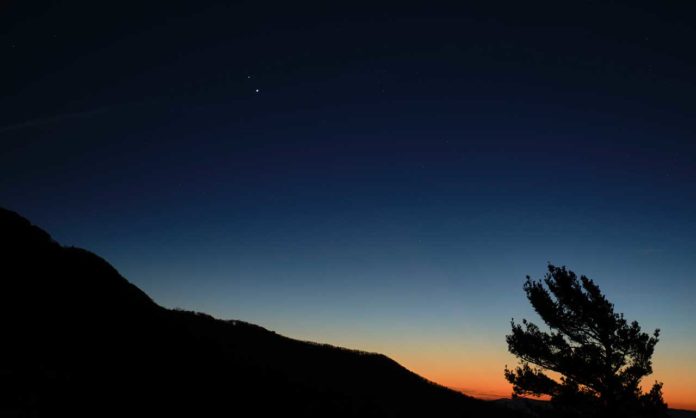We are just one day away from the long-awaited night of Dec. 21, when Jupiter and Saturn will engage in their “great conjunction.” It will be Jupiter and Saturn’s closest approach since shortly after the telescope was invented in the early 17th century.
On December 21, Jupiter will shine at a magnitude of -2.0, while Saturn will be ten times dimmer at just +0.64.
Both planets will come close in the night sky by an astronomical event called the “great conjunction” and popularly referred to as the ‘Christmas Star’.
The planets regularly appear to pass each other in the solar system, with Jupiter and Saturn’s positions being aligned in the sky about once every 20 years.
Then what makes this year’s event so unique?
It’s been nearly 400 years since the planets passed this close to each other in the sky and almost 800 years since Saturn and Jupiter’s alignment occurred at night, as it will for 2020. This most relative alignment will appear just a tenth of a degree apart and last for a few days.
On the night of 21st December 2020, the great conjunction can be seen with the unaided eye by looking toward the southwest just after sunset.
Henry Throop, an astronomer in the Planetary Science Division at NASA Headquarters in Washington, said, “Conjunctions like this could happen on any day of the year, depending on where the planets are in their orbits. The date of the conjunction is determined by Jupiter, Saturn, and the Earth in their paths around the Sun, while the tilt of Earth’s axis determines the solstice’s date. The solstice is the longest night of the year, so this rare coincidence will give people a great chance to go outside and see the solar system.”
For those who would like to see this phenomenon for themselves, here’s what to do:
- Find a spot with an unobstructed view of the sky, such as a field or park. Jupiter and Saturn are bright so that they can be seen even from most cities.
- An hour after sunset, look to the southwestern sky. Jupiter will look like a bright star and be easily visible. Saturn will be slightly fainter and appear slightly above and to Jupiter’s left until December 21, when Jupiter will overtake it, and they will reverse positions in the sky.
- The planets can be seen with the unaided eye, but if you have binoculars or a small telescope, you may be able to see Jupiter’s four large moons orbiting the giant planet.
